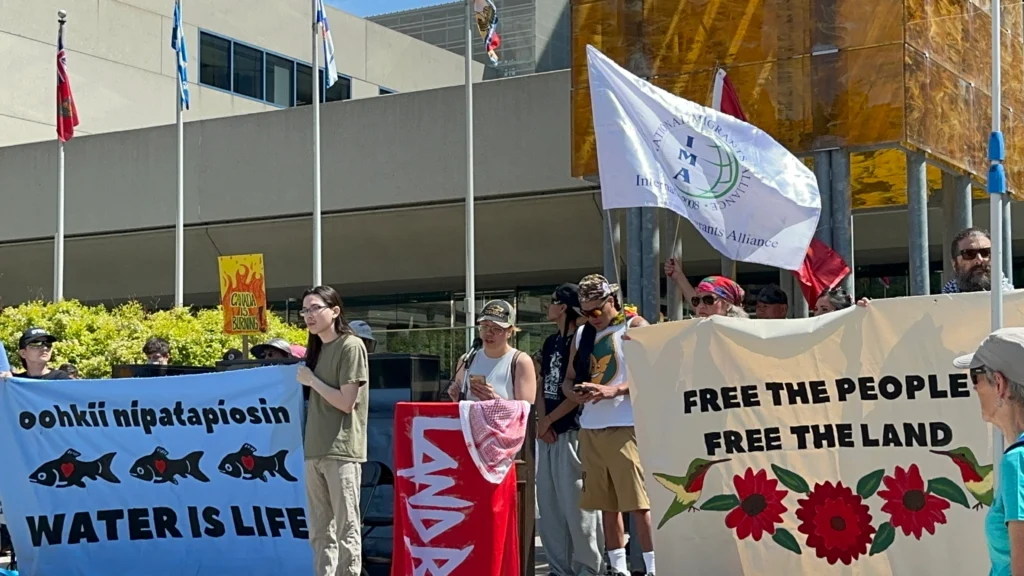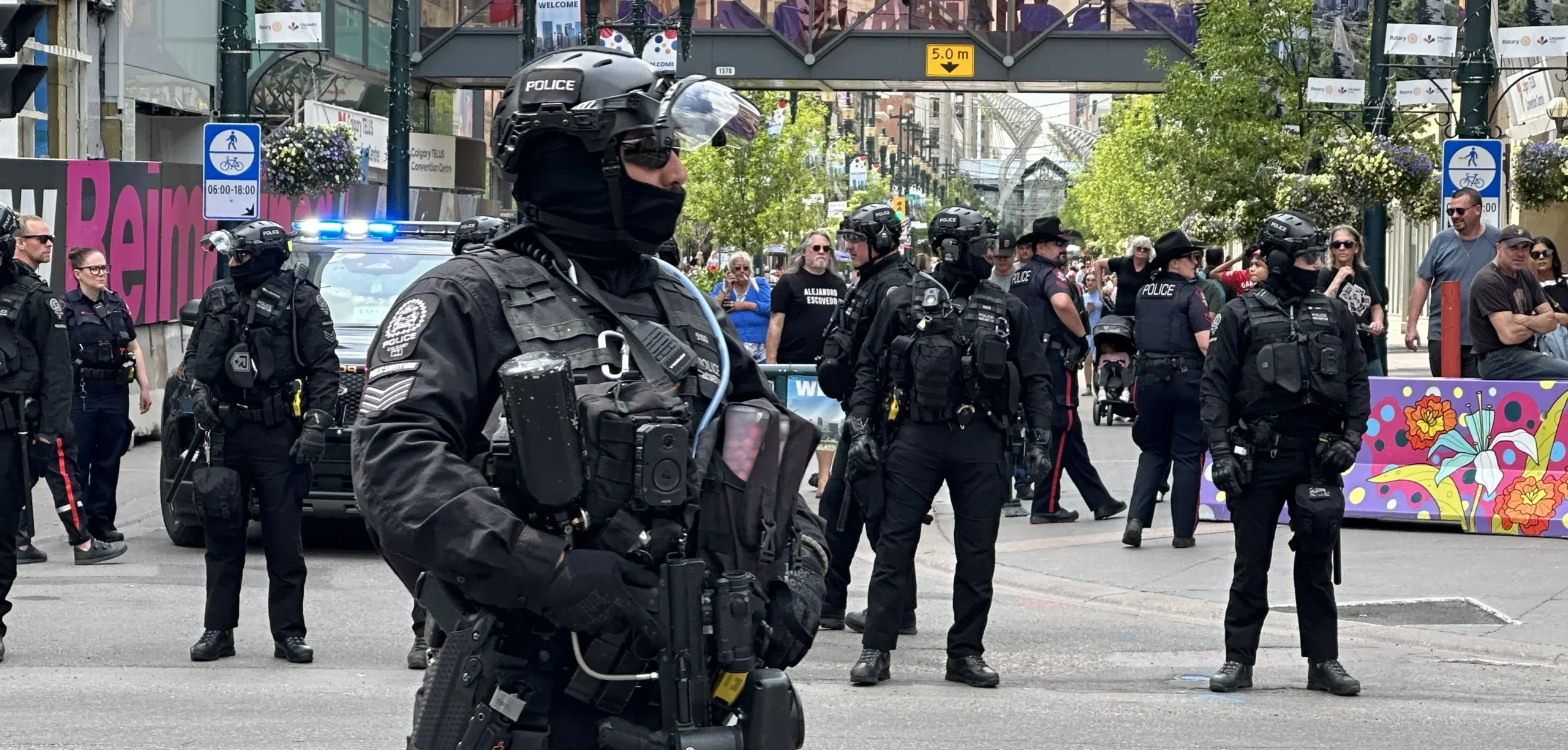The G7 Summit held this year in Alberta drew over a thousand protesters yesterday from a wide range of causes and countries. They gathered to denounce what they see as the increasingly anti-democratic and exploitative policies of the governments taking part in the annual meeting of the world’s wealthiest nations.
The demonstration began in one of Calgary’s “designated protest zones” near City Hall and turned into a march that brought together a broad mix of voices. Speakers and attendees highlighted issues raised by national liberation and human rights groups from Indigenous communities, Palestine, the Philippines, Jammu and Kashmir, and the Amhara people of Ethiopia. Also present were advocates for democracy, labour rights, climate and water justice, and international debt relief.
The protest was led by the International League of People's Struggles, a global coalition of anti-imperialist and human rights organizations. Their goal was to expose the Group of 7’s (G7) role in fuelling global exploitation and violence in the name of corporate profit and geopolitical dominance.
Palestinian flags and placards condemning the G7 leaders' support of Israel's genocide and occupation of Palestine were prominent among the crowd. An organizer who came down on a bus carrying dozens of people from Edmonton, Alberta told The North Star that, "this protest was led by ILPS but this was a collaboration of organizers from every city, from different groups… so we're organizing for a lot of different causes. There's Kashmiri flags here, there are Filipino solidarity groups. There just so happens to be Palestine being centered, because that is kind of the most pressing issue of our time right now."

After rallying to hear speeches and statements, the protest took to the street in defiance of what attending Yves Engler dubbed “protest pens”. In reference to the Calgary Police Service's “Designated Demonstration Zones” for the G7 summit, Yves said, “what they're doing is making it so you can't protest anywhere that's even in the vicinity of the leaders… It's very patronizing, and obviously they frame it this is a way to defend the Charter [of rights] while [the government is] very clearly undercutting the Charter.”
Another speaker, Isa Carlin from Migrante Alberta, spoke to the conditions which lead migrants to seek better conditions for themselves in countries like Canada. “Many of our compatriots here in Canada have come as political refugees, whether through direct harassment or simply to escape the worsening political, social, and economic system in the Philippines.”
Due to these conditions, when the industries back in their country of origin offer underprivileged workers the opportunity to emigrate, it presents as their only escape. “Canadian workplaces, farms, technical colleges and factories have offices in the Philippines to recruit workers from among the poor working and peasant classes in our homeland.”

Once they become workers in Canada, as migrants, they find themselves in a variety of new exploitative circumstances. “Many of us are trapped in abusive, oppressive conditions legally tied to our employers through closed work permits or unable to find other work due to the deteriorating economic situation here in Canada.”
The migrant organizer's statement emphasized the terrible conditions that have become synonymous with Canada's Temporary Foreign Workers Program (TFWP) after the UN special rapporteur report detailed forms of slavery of today, calling the TFWP a “breeding ground for contemporary forms of slavery.”
Migrant labourers in the agricultural sector are sometimes forced to live in trucks or share one bathroom among eight family members. These living and working conditions include limited access to clean water, which was a major concern of many organizations and protest attendees.
Nicole Johnston, an indigenous activist and advocate, represented the Piikani nation on the podium and spoke to The North Star about the major health impacts her people have faced due to open pit coal mines poisoning their water. “Our water that has been contaminated, you know, up in Crowsnest Lake, it was just recently announced that the waters were contaminated, the fish were overloaded with selenium. Water doesn't sit still, it travels, and so people are getting sick with cancer and stomach issues”.

In regard to the G7 leaders, she said, “Once they're in [office], they forget the people. They do their own thing. They have their own agenda, they push that. And to hell with us and we suffer.”
The state's response to the crowd's calls for basic democratic rights was a heavy police presence, with nearly as many officers as protesters. Many were equipped with body armour, helmets, and hard-knuckled gloves. Some were even mounted on horseback.
The Calgary police acted like herders, using several intimidation tactics against the protesters, including a method known as "kettling." This technique, often used by police, involves surrounding a crowd and gradually tightening the perimeter to control movement and isolate individuals, sometimes to make arrests. In this case, no one was arrested. Police also carried handheld cameras in addition to their bodycams, adding another layer of surveillance and pressure on the demonstrators.


